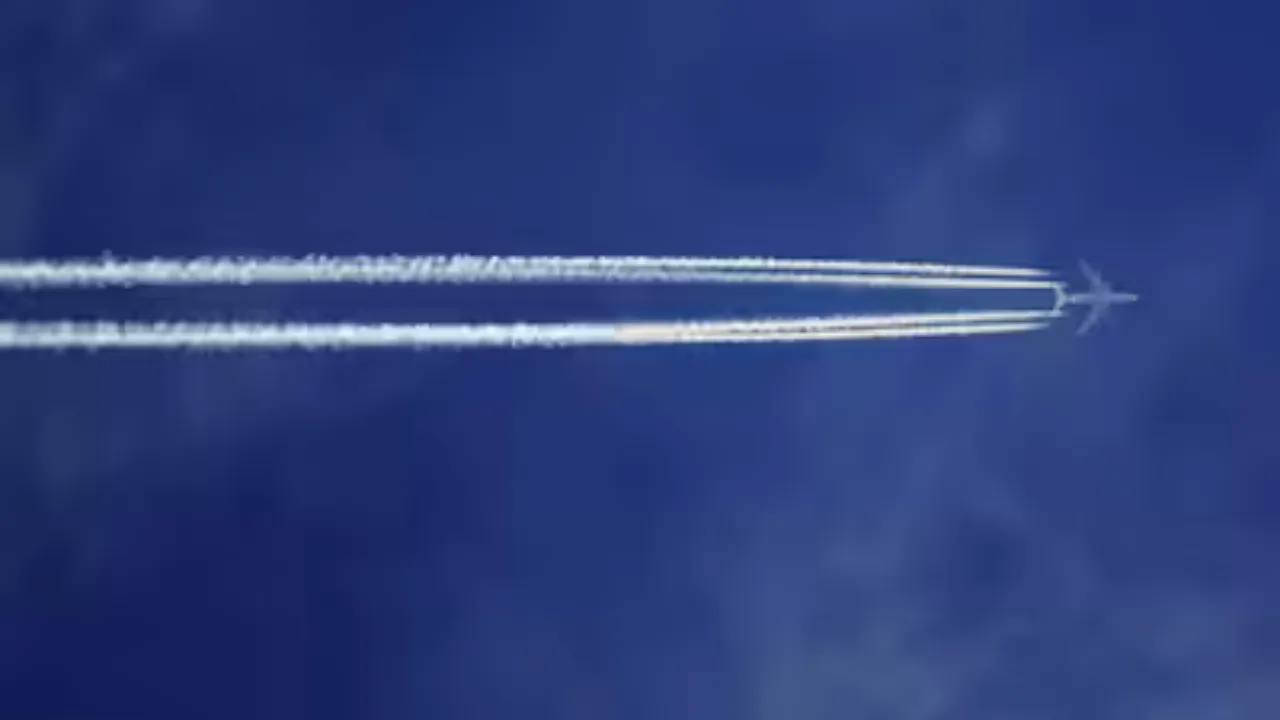Why Do Planes Leave a White Line in the Sky?
Have you ever looked up and seen a plane painting a long white line across the blue sky? Those streaks are not smoke or pollution — they’re called contrails, short for condensation trails.
These white lines appear because of how hot jet exhaust interacts with the freezing air high in the atmosphere. Let’s explore what causes them, why they sometimes disappear quickly, and how they affect the planet.
What Is a Contrail?
A contrail is a line-shaped cloud that forms behind airplanes flying at high altitudes.
When jet engines burn fuel, they release water vapor along with carbon dioxide. At cruising heights, where the temperature drops below -40°C, this vapor freezes instantly into tiny ice crystals.
Those crystals reflect sunlight, which is why we see them as a bright white line trailing behind the plane.
Why Planes Don’t Always Leave a White Line
Not every airplane leaves a contrail. The formation of a white line depends on two main factors — temperature and humidity.
If the air is cold enough and humid, ice crystals form and stay visible. But when the air is dry or slightly warmer, the vapor evaporates before freezing.
That’s why sometimes two planes fly in the same sky — one leaving a long line and the other leaving none. A tiny difference in altitude or weather conditions can make all the difference.
Types of White Lines in the Sky
Short-Lived Contrails
These white lines vanish within seconds or minutes. They form when the air is too dry for ice crystals to last.
As the moisture evaporates quickly, the white trail fades, leaving the sky clear again.
Persistent Contrails
When the air is very cold and humid, contrails can stay for hours. These are called persistent contrails.
They slowly spread out and may blend into thin, wispy cirrus clouds. If you see crisscross or grid-like white lines, it’s because planes are flying on different routes across the sky.
Why Some Planes Leave White Lines and Others Don’t
Altitude and Temperature
Jetliners usually fly between 30,000 and 40,000 feet, where it’s freezing cold — ideal for contrails. Smaller aircraft or propeller planes fly lower, where the air is warmer, so they rarely form white lines.
Engine Efficiency
Modern aircraft engines are cleaner and more efficient, producing fewer soot particles. Ironically, this sometimes makes them less likely to create visible white lines, since fewer particles mean fewer ice crystals can form.
Local Weather
Even slight changes in wind, humidity, or air pressure can decide whether a plane leaves a visible trail. That’s why contrails often appear patchy or vary in length.
Do White Lines Affect the Environment?
Yes, they do. Contrails act like thin clouds that trap heat escaping from Earth’s surface. This can cause a warming effect, especially when they persist and spread out.
Studies show that contrails contribute to global warming almost as much as the carbon dioxide produced by aircraft engines.
During the flight ban after 9/11, scientists noticed changes in temperature patterns when no planes were flying — proving that white lines have a real impact on our climate.
Can White Lines Be Reduced?
Researchers are working on ways to minimize contrails. Some possible methods include:
- Flying at different altitudes to avoid cold, humid air layers.
- Using cleaner fuels that produce fewer soot particles.
- Adjusting flight paths to reduce contrail-heavy zones.
Airlines and scientists are testing these strategies to make aviation more eco-friendly and reduce the number of visible white lines in the sky.
The “Chemtrail” Myth — Busted
Some people believe that white lines behind planes are “chemtrails” — chemicals secretly sprayed into the atmosphere.
But that’s just a myth. Scientists confirm that these streaks are simply made of water vapor and ice crystals, not harmful substances.
NASA, meteorologists, and environmental agencies worldwide have proven that contrails form naturally from engine exhaust and cold air — nothing more.
So, the next time you spot a white line overhead, remember — it’s science, not a secret project.
What White Lines Reveal About the Weather
Contrails can act as weather indicators. A long-lasting white line often means there’s high humidity up high, which can signal a change in the weather.
When you see many spreading contrails, it may suggest a warm front or increased moisture in the air — possible signs that clouds or rain are on the way.
Conclusion
So, why do planes leave a white line in the sky? It’s a mix of physics and nature — hot jet exhaust meeting freezing, humid air to form tiny ice crystals that shimmer in sunlight.
These white lines might look simple, but they tell us a lot about our atmosphere, weather, and even climate change.
Next time you gaze at a bright streak across the sky, you’ll know the science behind it — a fascinating dance of temperature, humidity, and flight.













